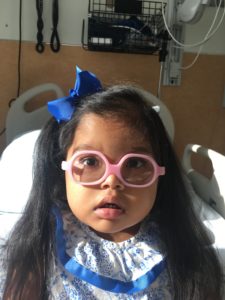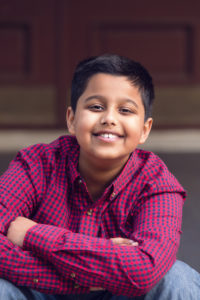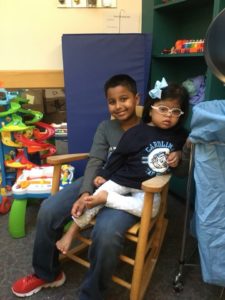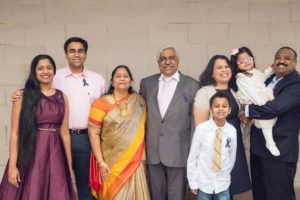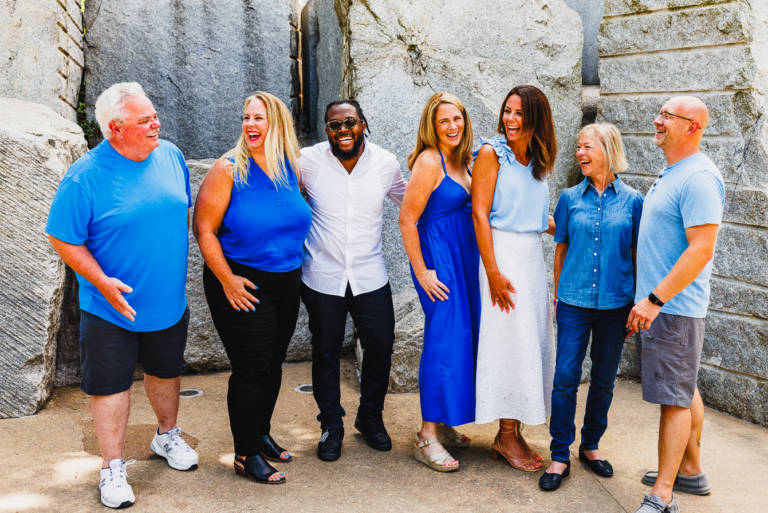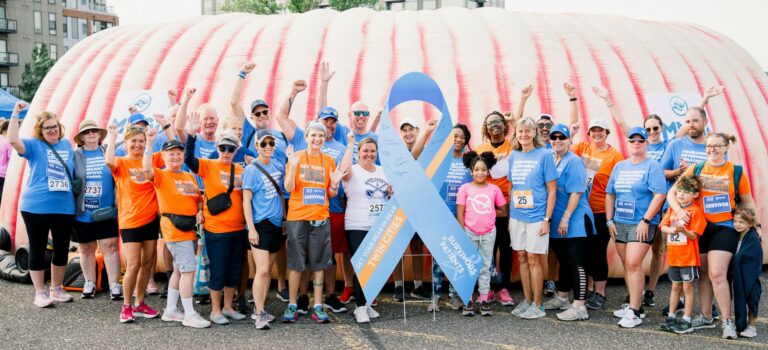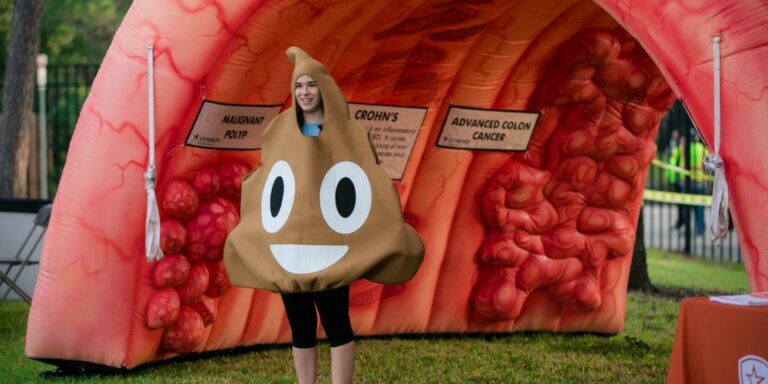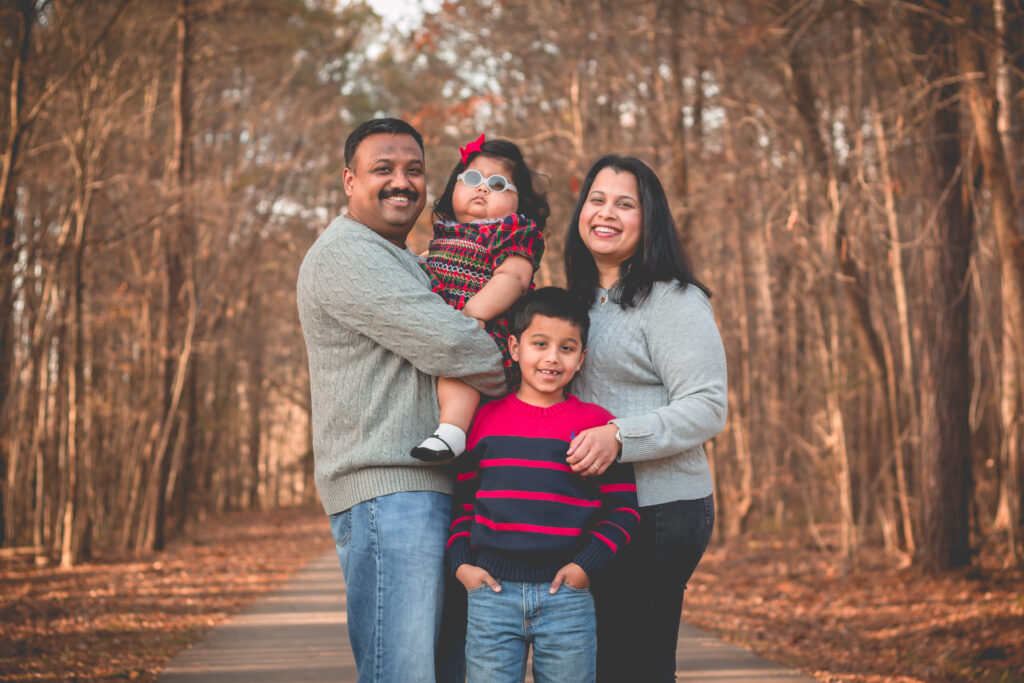
When they decided to start a family, Iyer and Parvathy Krishnan weren’t aware that they both carried the hereditary genetic mutation for Lynch syndrome. As carriers, it increased the risk that not only could they pass on Lynch syndrome to their children, but their children could be born with something called Constitutional Mismatch Repair Deficiency (CMMRD). The Krishnans would come to find out that both their children inherited Lynch syndrome, and therefore, CMMRD. This rare disease would have devastating effects on their family. For Rare Disease Day, Parvathy answers questions about CMMRD, the impact of hereditary cancer, and why advocacy is so vital to them as parents.
Q. What is Constitutional Mismatch Repair Deficiency (CMMRD)?
Parvathy Krishnan: Constitutional Mismatch Repair Deficiency (CMMRD) is a hereditary cancer predisposition syndrome. All of us have genes called checkpoint inhibitors – they help our body recognize abnormal cells (like cancer cells) from healthy cells. When these genes are altered or are abnormal they make it difficult for the cells in our body to repair themselves. When our cells are damaged or new cells are formed without being checked they result in cancer. Childhood risk for all cancers especially GI cancers, brain tumors and T-cell lymphomas among others remain high.
Q. What makes CMMRD different from Mismatch Repair Deficiency (MMRD) found in Lynch syndrome?
PK: An individual with Lynch syndrome has one copy of a defective gene and one normal gene. Individuals with CMMRD have 2 copies of defective genes (one from each parent). The lifetime risk for someone with Lynch syndrome is higher than the normal population. This means that the possibility of having cancer increases as a person gets older.
Most individuals will be affected by cancer before they reach adulthood. Most children diagnosed with CMMRD usually present with advanced/metastatic cancers. Our children have homozygous EPCAM and from what we have been told our son is the only living entity known with this condition.
Q. What is the risk for couples who both carry a mutation in their MMR gene to have a child with CMMRD?
PK: You have a 25% chance of having a child with CMMRD, 50% chance of having a child with Lynch syndrome, and a 25% chance of having a child with neither. While this may seem like an anomaly our family had two children both with CMMRD.
Q. As CMMRD puts children at risk for cancer from infancy, how early are children often diagnosed, and what triggers a diagnosis?
PK: There is a huge range of children who have been diagnosed with CMMRD. As parents we are constantly and periodically looking at various articles/studies that have been published or have been spoken about. There have been some children who have been 2-years-old at the time of diagnosis (brain tumors). Hematological cancers have been diagnosed as young as 1 year of age. GI cancers have averaged 8-10 years on average. Our daughter had her first colonoscopy when she was 2-½ years old: at that time they removed 3 adenomatous polyps (high and low grade dysplasia). Most individuals with CMMRD do not survive until adulthood.
Q. Aside from elevated cancer risks, are there other health issues someone with CMMRD is at risk for?
PK: Cancer is a beast that can be compared to none. However, in addition to treatment for cancer, children with CMMRD have to undergo significantly more surveillance (in addition to treatments). Scans every 3-6 months in addition to blood work are generally considered “normal.” When presented with GI cancers children could potentially have scopes every 3 -6 months and surgery periodically to remove cancerous lesions.
All of this repeated testing, surgical intervention can lead to secondary medical conditions that are equally challenging and non-responsive to traditional treatments. There is a lot of deconditioning, poor strength that a child has when they undergo anesthesia, surgery and long hospital stays. Physical development is affected, so is their mental and emotional health. Children often feel socially isolated from their peers. Unlike traditional cancer treatments children with CMMRD do not have an end of treatment. While they may finish treatment for one cancer (if they are lucky) they will continue to have monitoring and potential cancer recurrences soon after.
Our child has had significant motility disorder after his colectomy. He has had to have a number of medications to help wake up his gut. He has also had massive bleeding, pancreatitis, abdominal pain, malnutrition (requiring TPN), depression and PTSD related to hospital procedures.
Q. As a #MedicalMomma you have been the biggest advocate for both Ira and Yash. In the beginning did you find a healthcare team that specialized in rare genetic mutations like CMMRD, or did you find there was a learning curve for everyone involved in caring for your children?
PK: We have been at this for the last five years. For the first two years we did not know Yash had CMMRD. It was very difficult to find a team that was willing to explore why our then six-year-old had bleeding in stools and was having significant cramping. It was not until one GI doctor understood our dilemma and scoped him that we realized he had eight-hemorrhagic polyps that were blocking most of his colon. He had whole exome sequencing that did not show any alarming GI conditions. At eight when he had his colectomy we were told he had a condition called FAP. It was after his colectomy that the surgeon and GI doctor felt the need to further test him for Lynch syndrome. The first year other than a brain MRI a lot of time was not spent on CMMRD (because it wasn’t considered emergent). We had spent time helping him recover from his colectomy and pouch reversal. It was not until his motility disorder caused significant difficulty with quality of life did we choose to reach out to other experts.
It was very difficult even then to get connected to a pediatric genetic oncologist. For the second year of this diagnosis we spent most of our time with a GI specialist who discovered additional polyps in the small intestine. It was at that time we decided to move care to a center that has both experience with genetic cancer and has seen one other child with the same.
Q. If you could climb on your soapbox right now, what would you want others to know about genetic testing, children, and parenting a child with a rare disease?
PK: Genetic testing is what saved our son. Because of testing our family now has four previvors, one adult cancer survivor, and our son who continues to be a trailblazer. While there may be comfort in the unknown as a parent/caregiver to two children with rare and ultra rare diseases knowing is the first step in a long bumpy road. While there is a lot of ethical dilemma around testing, living with a known diagnosis will help you live a longer and healthier life than the unknown.
If you can please donate blood, tissue samples, personal time to supporting research initiatives. Even though we know there may not be a cure in our lifetime for CMMRD both our children (and us) will be enrolled in every possible study possible. We hope to leave a legacy for the future generation through not only awareness and advocacy but by donating to research.
We lost our four-year-old daughter to multiple rare diseases. Knowing our son has CMMRD has helped his medical team stay ahead of his cancer and nip it in the bud.
Unlike adult cancer childhood cancers only receive 4% of total funds raised. Our children do not have drugs or trials that are specific to them. If you have a chance as an adult with CRC please enroll in research – you may help save the life of another adult or a child.
Parenting a child with a rare disease is like planning a mission to outer space with zero funding or support. We as a family have made it our life’s goal to gather whatever resources we can to help every family on this mission.
LEARN MORE ABOUT CANCER AND GENETICS LEARN MORE ABOUT LYNCH SYNDROME


